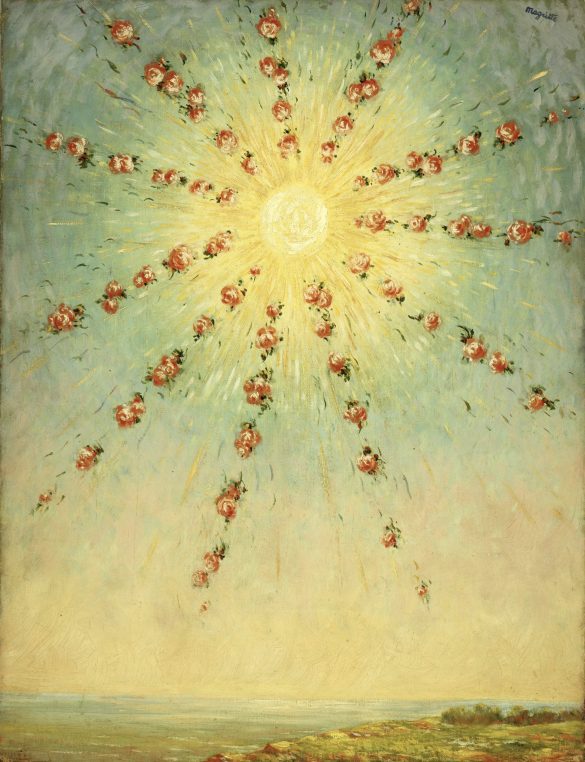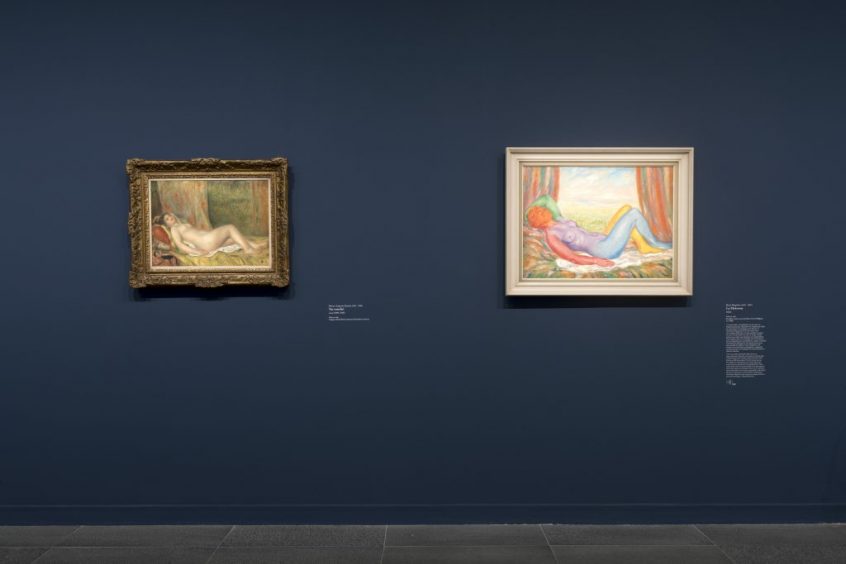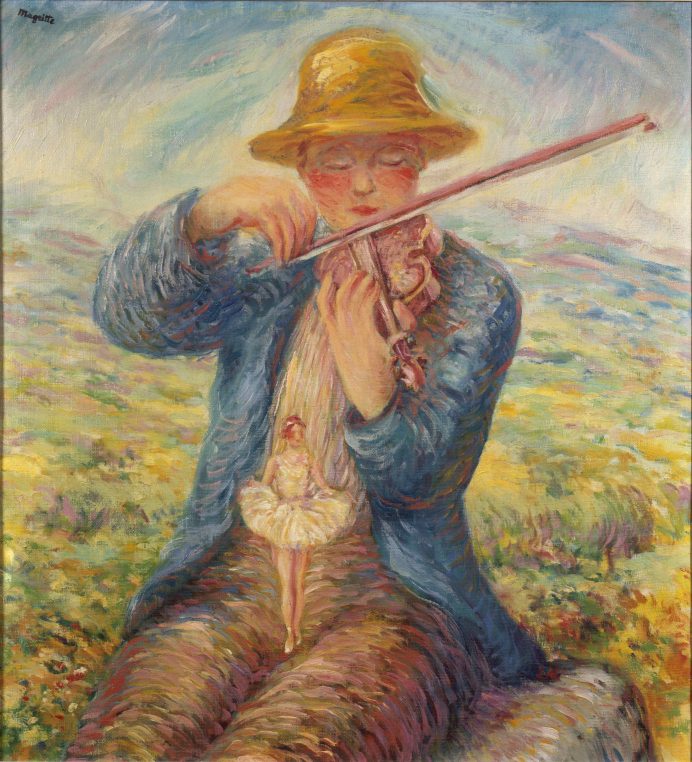I always think of René Magritte as the painter of night with the moon and strange shadows. At l’Orangerie this time, he is sunny and explodes with light. The reason is the theme of the exhibition “Magritte’s Renoir period, 1943-1947”, where he is inspired by the French Impressionist’s bright colors. Convinced that the defeat of the German troops at Stalingrad heralded the final defeat of Nazi Germany and the approaching end of the world conflict, Magritte saw himself as a prophet of happiness and of the return of peace. The 100 paintings and drawings shown here until July 19 are a true discovery. And some are quite naughty.

La Voie Royale, 1944, private collection, (it celebrates the victory of the Allies ) photo courtesy of Sotheby’s © ADAGP, Paris 2021
In four years René Magritte produced over seventy paintings belonging to what he called his “Renoir Period”, then his “solar period”. His works celebrate the bright side of life, flowers, nudes, and rural landscapes. Yet when you enter the exhibition you face a poster of Léon Degrelle, the founder of the far right Rex party, reflected in a mirror as Adolf Hitler, which the artist drew in 1937. It shows his active role in the Antifascist Intellectual movement. Magritte left Brussels in May 1940 when the Germans invaded the city.
Another dark work is “Le Présent” a gouaches paper representing an eagle I a suit, a bird of prey symbolizing the Weimar Republic. He looks very human in appearance. Instead of eggs he is sitting on three bells, the attribute of the jester in the carnival tradition.
One of his first paintings of the new period starting in 1943, was one inspired by Les Baigneuses, The Bathers. Hanging next to it in the gallery is the Renoir. There are also quite a few bouquets of flowers by both painters but idid not particularly warm to them.
Facing the nudes, of which there are a few, is a discreet little alcove with drawings which are marvelous. The artist’s sense of humor and naughtiness add to the quality of the works in color pencil on paper. I particularly liked one which represents a pipe with a penis attached to it. In French the word pipe is also associated to a blow job.
And one of the great qualities of this show curated by Didier Ottinger, General curator at Centre Pompidou, is that many works come from private collections. I loved “Le Premier jour” with the violinist playing for a tiny ballerina on his laps and “the Lesson of anatomy” featuring a flower arrangement with a tree inside it. “Image with a green house” shows a giant violin stuck between two buildings, and “Elseneur” is a strange dark green construction made of trees. Some paintings are really too colorful but it is a very interesting new facet of Magritte which I had never seen.
Until July 19 at Musée de l’Orangerie in the Tuileries gardens. And make sure to visit the rest of the museum with the collection of Impressionists given by Jean Walter and Paul Guillaume. The two rooms with Monet’s water lilies on the first floor are also a must.
Share this Post





